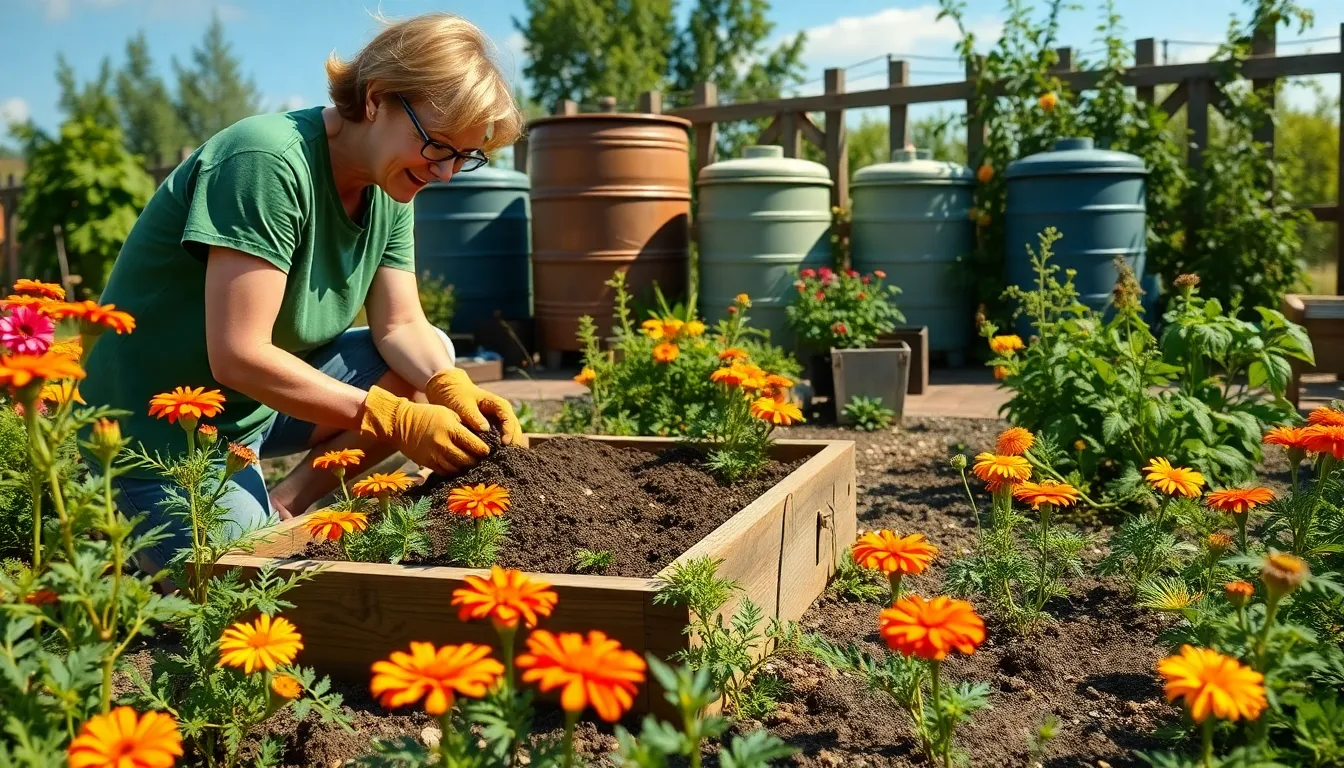If you think gardening is just about picking pretty flowers, think again. Sustainable gardening practices are here to revolutionize how we cultivate our green thumbs. This isn’t just about getting your hands dirty, it’s about doing so in a way that’s kind to the environment and future-proof for generations to come. So, grab your shovel, put on your gardening gloves, and let’s dig into the roots of sustainability.
Sustainable Gardening Practices

Sustainable gardening goes beyond the aesthetics of lush landscapes and verdant greenery. At its core, it represents a philosophy of working harmoniously with nature. This type of gardening aims to minimize environmental impact while fostering biodiversity and promoting ecological balance. Sustainable gardening encompasses practices that conserve resources, enhance soil health, and support local ecosystems. By understanding these principles, gardeners can create spaces that not only look good but also contribute positively to the environment.
Benefits of Sustainable Gardening
The perks of adopting sustainable gardening practices are plentiful and profound. First and foremost, they help conserve vital resources. For instance, reducing water usage and maintaining soil quality promotes a healthier garden ecosystem. Also, incorporating native plants can attract beneficial insects, leading to natural pest control and pollination. Besides, sustainable gardens can enhance local biodiversity and even mitigate climate change effects by sequestering carbon. As a bonus, these gardens often require less maintenance, meaning more time enjoying the fruits of your labor rather than laboring over them.
Key Sustainable Gardening Practices
Mastering sustainable gardening involves implementing several essential practices that work in concert to boost garden health.
Soil Health and Conservation Techniques
Healthy soil is the foundation of any thriving garden. Implementing conservation techniques is critical. Start with composting, this not only recycles kitchen waste but enriches the soil with organic matter. Mulching can prevent erosion, retain moisture, and suppress weeds, creating a win-win for garden health. Consider crop rotation to prevent nutrient depletion: switching up plant locations each season helps keep the soil vibrant.
Water Conservation Strategies
Water conservation is paramount, especially in regions prone to drought. Consider installing rain barrels to collect and store rainwater. This not only provides a sustainable water source but also reduces runoff and erosion. Drip irrigation systems can target roots directly, minimizing evaporation and waste. Grouping plants with similar water needs can also optimize water usage, helping gardens thrive with less resource strain.
Pest Management Approaches
Managing pests sustainably means opting for approaches that protect beneficial insects and minimize chemical use. Integrating companion planting can deter pests naturally while promoting plant health. For instance, marigolds can repel nematodes and certain insects, allowing neighboring plants to flourish. Also, encouraging natural predators, such as ladybugs and lacewings, creates a balanced ecosystem. If chemical treatments are necessary, opting for organic solutions can reduce environmental harm.
Choosing Native and Drought-Resistant Plants
Selecting native plants is a crucial strategy for sustainable gardening. These plants are naturally adapted to local conditions, requiring less water and maintenance compared to non-native species. Incorporating drought-resistant varieties can further enhance garden resilience, particularly in areas facing water scarcity. Not only do these plants support local wildlife, but they also create a harmonious blend of color and texture across the garden landscape.
Creating a Biodiverse Garden Ecosystem
A biodiverse garden is one that acts as a mini-ecosystem, supporting various forms of life. To achieve this, incorporate a mix of plants that bloom at different times, providing food throughout the seasons for pollinators and other creatures. Add features like birdhouses, water features, or insect hotels to create habitats for various wildlife. This approach not only improves garden health but also fosters a deeper connection between the gardener and nature, enriching the overall gardening experience.

